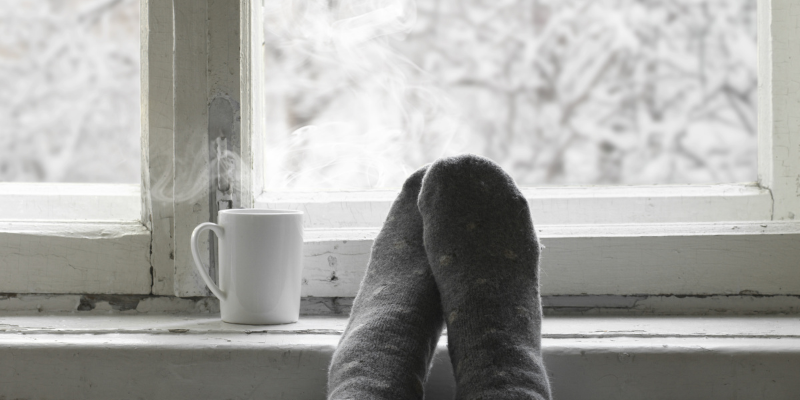As winter sets in and temperatures begin to dip below freezing, many homeowners start worrying about one of the most frustrating cold-weather problems-frozen pipes and water lines. Not only can frozen pipes interrupt water flow, but if they burst, they can also cause serious damage to your home’s plumbing and heating systems.
The good news? With a bit of preparation and awareness, most freezing issues can be prevented. In this guide, we’ll take a closer look at why pipes and water lines freeze, how to recognize warning signs, and the best preventive steps you can take to keep your home safe and comfortable through winter.
1. Why Freezing Happens in the First Place
Understanding why pipes and water lines freeze is the first step toward preventing it.
Water expands as it freezes. When water inside a pipe or line turns to ice, it exerts enormous pressure-sometimes over 2,000 pounds per square inch (psi). This pressure can cause pipes to crack or burst, even if they’re made from durable materials like copper or PEX.
Common Conditions That Lead to Freezing
- Sudden temperature drops: Even a few hours below freezing can be enough to cause standing water to solidify.
- Poor insulation: Exposed or poorly insulated pipes are most vulnerable.
- Cold drafts or gaps: Unsealed wall openings, crawl spaces, and attics can funnel freezing air toward plumbing lines.
- Lack of circulation: If warm air isn’t reaching the area where pipes or water lines are located, temperatures can drop faster than expected.
The problem isn’t limited to plumbing, either. Refrigerant lines and condensate drain lines in HVAC systems can freeze under similar conditions, leading to restricted airflow or equipment damage.
2. Identifying the Most At-Risk Areas
Not every pipe or line in your home faces the same level of risk. Some sections are naturally more exposed to cold temperatures than others.
Pipes Most Likely to Freeze
- Exterior walls: Pipes running along or within outside walls often get the least insulation.
- Basements and crawl spaces: These areas are cooler and sometimes unheated.
- Garages and sheds: Pipes that serve laundry sinks or outdoor spigots are vulnerable.
- Attics: Warm air rises, but poorly insulated attics can still dip below freezing in winter.
Water Lines at Risk
- Condensate drain lines: These carry moisture away from furnaces or air handlers. If the line freezes, water can back up into the system.
- Heat pump refrigerant lines: Outdoor coils and refrigerant tubing are exposed to low temperatures and frost.
- Mini-split line sets: These flexible lines connect outdoor and indoor units and can freeze if not properly insulated.
By identifying your system’s weak points, you can focus your efforts where they’ll make the most impact.
3. The Role of Insulation
Insulation is one of the simplest and most effective defences against freezing. It helps maintain a consistent temperature around pipes and lines, even when outdoor air is frigid.
Insulating Plumbing Pipes
- Foam pipe sleeves: Widely available, easy to install, and effective for most household pipes.
- Fibreglass or polyethylene wraps: Suitable for larger pipes or irregular runs.
- Heated cable or heat tape: For areas that consistently experience deep cold, electric heating cables provide active protection by maintaining a small but steady warmth along the pipe.
When insulating, focus on all exposed lengths, especially where pipes pass through unheated zones like basements, crawl spaces, or garages. Don’t forget elbows, joints, and fittings-they’re often overlooked but just as prone to freezing.
Insulating Water Lines
HVAC refrigerant lines are typically covered in black foam insulation. Over time, this insulation can crack or deteriorate. Inspect the insulation each fall and replace any damaged sections before temperatures drop.
For condensate lines, consider pipe heat cable or foam sleeves to reduce the chance of freezing near discharge points, especially in basements or exterior exits.
4. Sealing Air Leaks and Drafts
Even well-insulated pipes can freeze if cold air seeps into your home through cracks or gaps. Air leaks are a hidden culprit in many freezing cases.
Where to Check
- Around windows and doors
- In attic access panels
- Around utility penetrations, such as where pipes, vents, or electrical conduits enter walls
- Behind sink cabinets, especially on exterior walls
Use expanding foam, silicone caulk, or weatherstripping to close these gaps. This not only protects pipes but also improves your home’s energy efficiency and comfort.
5. Keeping Air Circulating Indoors
Good air circulation is key to keeping temperatures consistent inside your home. Stagnant or enclosed areas often become cold pockets where pipes are more likely to freeze.
Practical Circulation Tips
- Open cabinet doors under sinks (especially those along exterior walls) to let warm air reach the pipes.
- Keep interior doors open, particularly to rooms that don’t have dedicated heating vents.
- Avoid blocking vents with furniture or rugs so that air can move freely.
If you have a zoned HVAC system, make sure no zone is completely shut off in winter-this can lower temperatures too much in those areas.
6. Managing Indoor Temperatures
Keeping your thermostat set properly can make all the difference during cold spells.
Ideal Winter Settings
- Maintain your home at no lower than 18°C (65°F) during the day and 16°C (60°F) overnight.
- When leaving home for extended periods, never turn the heat completely off. Instead, set it to around 15°C (59°F) to conserve energy while still protecting your plumbing.
- Smart thermostats can help by maintaining minimum temperatures even when you’re away.
Even a few degrees of heat can prevent your pipes and water lines from dropping below the freezing threshold.
7. Protecting Outdoor Plumbing and HVAC Units
Outdoor equipment and exposed lines face the harshest winter conditions, so they require extra attention.
Outdoor Faucets and Hoses
- Disconnect hoses before the first freeze and store them indoors.
- Shut off exterior faucets using the indoor shutoff valve (usually located near the main supply line).
- Drain the faucet line completely and consider installing frost-proof spigots if your home doesn’t already have them.
HVAC Outdoor Units
- Clear away snow and ice from around the heat pump or air conditioner to maintain airflow.
- Avoid covering the entire unit with plastic tarps, which can trap moisture. Instead, use breathable covers designed for HVAC equipment.
- Ensure that condensate drains remain unobstructed so water can flow freely instead of freezing in place.
8. Condensate Line and Drain Pan Maintenance
Condensate lines remove moisture produced by your furnace, heat pump, or air handler. If these lines freeze, water can back up into the system, causing shutdowns or water damage.
Preventive Steps
- Check that the drain line slopes downward for proper flow.
- Insulate the line if it runs through an unheated area.
- Keep the drain trap clear of debris and algae.
- If your HVAC system is in an attic or crawl space, make sure drain pans are free of standing water and have secondary drains in place.
Adding a small heat cable near the outlet point can help keep condensate from freezing in extreme conditions.
9. Preparing for Extended Absences
If you’re planning a winter vacation or leaving your home unoccupied, a few extra steps can prevent a nasty surprise when you return.
Before You Leave
- Set your thermostat to maintain at least 15°C (59°F).
- Shut off the main water supply and open faucets to drain standing water from the lines.
- Ask a friend or neighbour to check on your home occasionally, especially during deep freezes.
- For extra peace of mind, consider installing smart sensors that alert you if temperatures drop dangerously low or if a leak occurs.
These small measures can save you from costly water and property damage.
10. Recognizing Early Warning Signs
Knowing the warning signs of a frozen pipe or line allows you to act before it bursts.
Signs Your Pipes May Be Freezing
- Water pressure suddenly drops or stops.
- Frost or condensation forms on visible pipes.
- Unusual smells come from drains or faucets (caused by blocked airflow).
- You hear banging or gurgling noises in the plumbing.
For HVAC systems, watch for:
- Reduced airflow from vents.
- Water pooling near the indoor unit.
- Ice forming on refrigerant lines or outdoor coils.
If you notice any of these symptoms, turn off the water supply or HVAC system and begin gently thawing the affected area using a hair dryer or portable heater. Never use an open flame, as this can damage pipes or cause fires.
11. What to Do if a Pipe or Line Does Freeze
Despite best efforts, sometimes freezing still happens. Acting quickly can make the difference between a small inconvenience and significant damage.
Immediate Steps
- Turn off the main water valve if you suspect a frozen plumbing line.
- Open nearby faucets to relieve pressure and allow water to escape once thawed.
- Use safe heat sources like space heaters, heating pads, or warm towels to gradually thaw the area.
- Inspect for leaks once water starts flowing again-cracks may not be visible until pressure is restored.
For HVAC-related freezing, turn off the system and allow the lines to thaw naturally. If ice buildup is severe, it’s safest to have a technician inspect for damage before restarting.
12. The Value of Seasonal Maintenance
Preventing freezing isn’t a one-time effort-it’s part of good home maintenance.
Seasonal Checklist
- Inspect insulation around pipes and water lines every fall.
- Test your heating system and thermostat before cold weather hits.
- Check all vents, ducts, and registers for obstructions.
- Clean drain pans and ensure condensate lines are clear.
- Inspect attic and crawl space insulation levels to maintain steady indoor temperatures.
By making these checks a yearly habit, you can reduce the risk of frozen pipes and improve your overall energy efficiency.
13. How Insulation and Air Balance Work Together
It’s not just about wrapping pipes-your home’s overall heat distribution plays a major role in preventing freezing.
Poorly balanced HVAC systems can leave certain rooms or sections significantly colder than others. This uneven heating often creates cold pockets where pipes are located.
A simple airflow assessment or balancing adjustment can correct this, ensuring that warm air reaches every corner of the home. In many cases, even sealing leaky ductwork can prevent localized freezing.
14. Don’t Forget About Your Garage and Workshop
Many homeowners overlook utility areas that aren’t always heated but still contain plumbing or HVAC components.
If your garage has a water line or HVAC connection:
- Use pipe sleeves or heat tape for exposed pipes.
- Weatherstrip the garage door to minimize drafts.
- Keep the garage temperature above freezing using a space heater or small duct extension if possible.
These small upgrades are inexpensive compared to repairing a burst line.
15. Final Thoughts
Frozen pipes and water lines are more than just a seasonal nuisance-they can cause major water damage, costly repairs, and system downtime. But the good news is, prevention is simple and affordable when you plan ahead.
By combining proper insulation, air sealing, consistent heating, and regular maintenance, you can keep your home’s plumbing and HVAC systems running smoothly all winter long.
The goal isn’t to fight the cold-it’s to make sure your home is ready for it. A few proactive steps now can spare you the stress and expense of emergency repairs when temperatures take their inevitable plunge.




